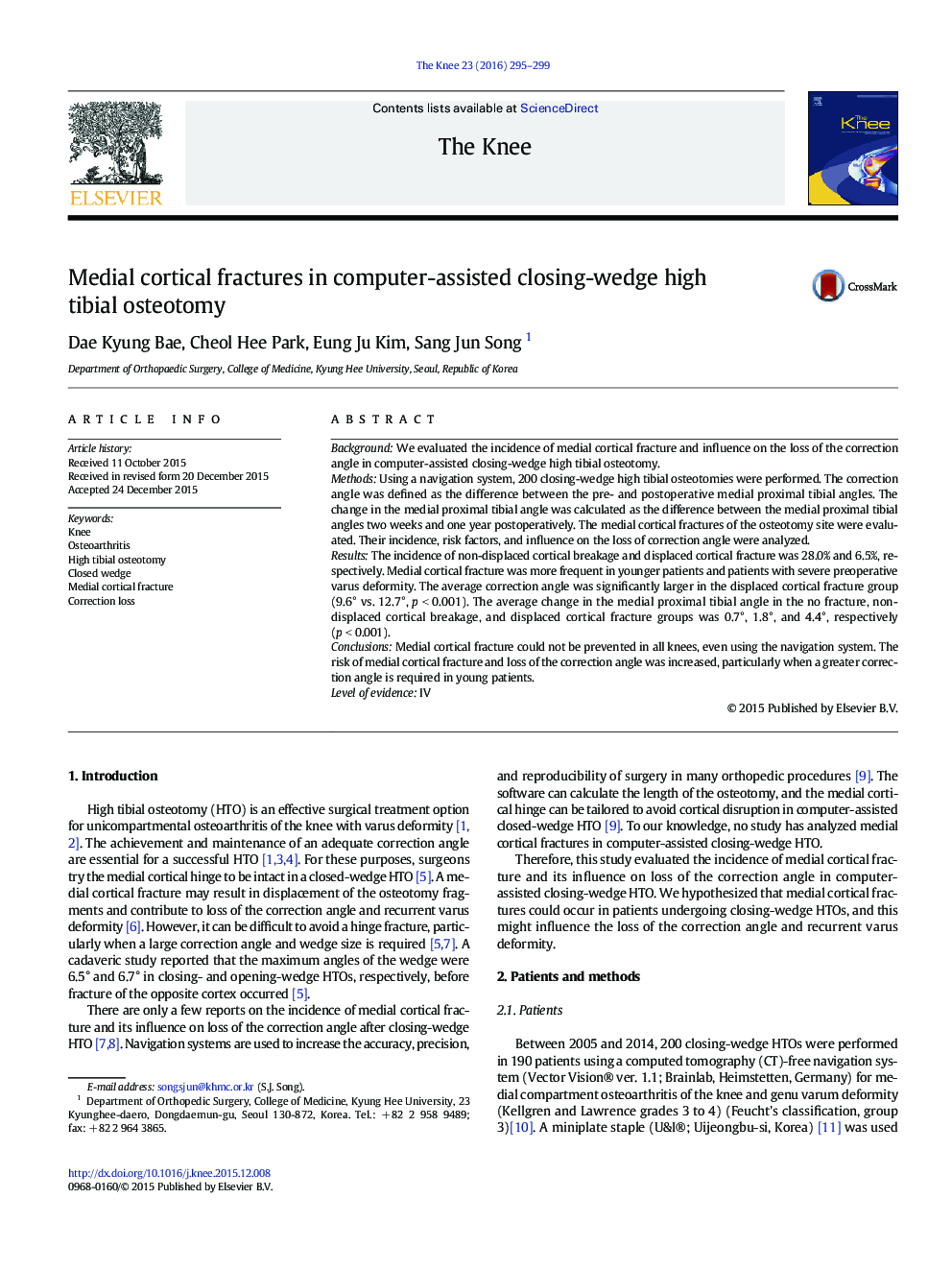| Article ID | Journal | Published Year | Pages | File Type |
|---|---|---|---|---|
| 4077295 | The Knee | 2016 | 5 Pages |
•The incidence of non-displaced cortical breakage and displaced cortical fracture was 28.0% and 6.5%, respectively.•The possibility of medial cortical fracture need to be considered when a greater correction angle is required.•The displaced medial cortical fracture influences the loss of the correction angle in closed-wedge HTO.
BackgroundWe evaluated the incidence of medial cortical fracture and influence on the loss of the correction angle in computer-assisted closing-wedge high tibial osteotomy.MethodsUsing a navigation system, 200 closing-wedge high tibial osteotomies were performed. The correction angle was defined as the difference between the pre- and postoperative medial proximal tibial angles. The change in the medial proximal tibial angle was calculated as the difference between the medial proximal tibial angles two weeks and one year postoperatively. The medial cortical fractures of the osteotomy site were evaluated. Their incidence, risk factors, and influence on the loss of correction angle were analyzed.ResultsThe incidence of non-displaced cortical breakage and displaced cortical fracture was 28.0% and 6.5%, respectively. Medial cortical fracture was more frequent in younger patients and patients with severe preoperative varus deformity. The average correction angle was significantly larger in the displaced cortical fracture group (9.6° vs. 12.7°, p < 0.001). The average change in the medial proximal tibial angle in the no fracture, non-displaced cortical breakage, and displaced cortical fracture groups was 0.7°, 1.8°, and 4.4°, respectively (p < 0.001).ConclusionsMedial cortical fracture could not be prevented in all knees, even using the navigation system. The risk of medial cortical fracture and loss of the correction angle was increased, particularly when a greater correction angle is required in young patients.Level of evidenceIV
